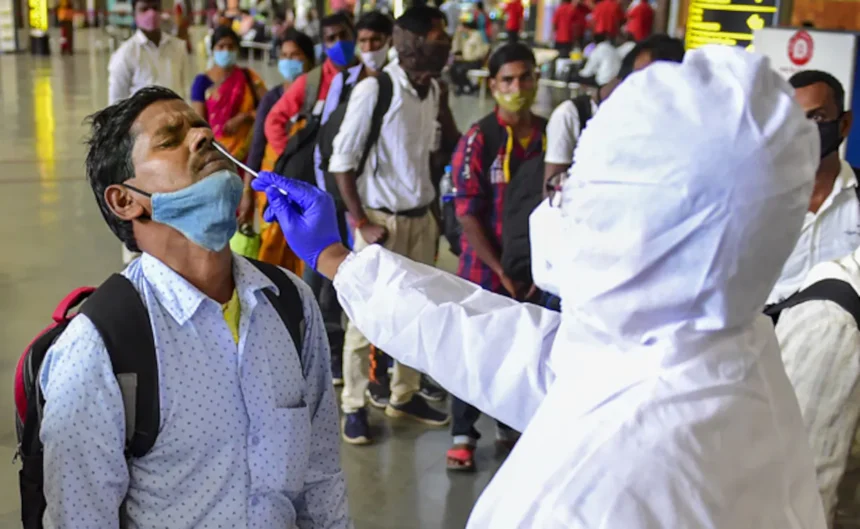India’s battle against the COVID-19 pandemic continues as the country recorded 535 new coronavirus infections, according to the latest data from the Union Health Ministry. The number of active cases decreased to 6,168 from 6,591, indicating a positive trend in controlling the spread of the virus. However, the death toll has risen to 5,31,854, with five additional fatalities reported.
India, a country grappling with the ongoing COVID-19 crisis, witnessed a ray of hope as the number of new infections dipped to 535, according to the Union Health Ministry’s recent data update. This decrease in cases is accompanied by a decline in active cases, which now stand at 6,168, down from the previous count of 6,591. However, despite these positive indicators, the death toll has climbed to a staggering 5,31,854, with five additional deaths reported, including three fatalities recently reconciled by Kerala.
India’s total COVID-19 case tally stands at 4.49 crore (4,49,88,426), reflecting the enormous scale of the pandemic’s impact on the nation. Nevertheless, the proportion of active cases to total infections remains minuscule, constituting a mere 0.01 percent. This statistic provides a glimmer of optimism as it suggests that a significant number of infected individuals are on the path to recovery.
The national COVID-19 recovery rate in India has been recorded at an encouraging 98.80 percent, according to the health ministry’s official website. This remarkable recovery rate signifies the effectiveness of the healthcare system and the dedication of healthcare professionals in providing adequate treatment and care to patients.
As the country strives to combat the virus, various measures have been implemented to curb its spread. Vaccination campaigns continue to play a pivotal role in India’s fight against the pandemic. The government has undertaken extensive efforts to accelerate the vaccination drive and ensure widespread access to vaccines. These initiatives have contributed significantly to the decline in active cases and the high recovery rate.
While progress is being made, it is essential to remain vigilant and continue adhering to preventive measures. Public awareness campaigns emphasizing the importance of mask-wearing, hand hygiene, and social distancing continue to be crucial in reducing transmission rates. The collaboration between the government, healthcare professionals, and citizens is essential for effectively managing the ongoing crisis and minimizing the impact of the virus.
Furthermore, it is crucial to address regional variations in the spread of the virus. Kerala, for instance, recently reconciled three fatalities, highlighting the need for targeted interventions in areas experiencing a surge in cases. The government’s response should be agile and adaptable, incorporating localized strategies to address emerging challenges and prevent further outbreaks.
India’s battle against the COVID-19 pandemic has been a long and arduous one, with the nation grappling with the devastating impact of the virus. However, the recent decline in active cases, coupled with a high recovery rate, provides hope for a brighter future. The collective efforts of healthcare professionals, government authorities, and citizens are paramount in navigating through these challenging times.
while India recorded 535 new COVID-19 infections, the decrease in active cases to 6,168 is a positive development. The nation’s high recovery rate of 98.80 percent is a testament to the efficacy of medical interventions and the resilience of its healthcare system. However, the rising death toll reminds us of the importance of continued vigilance and proactive measures to combat the virus. By working together and adhering to preventive guidelines, India can overcome this crisis and emerge stronger in the face of adversity.




